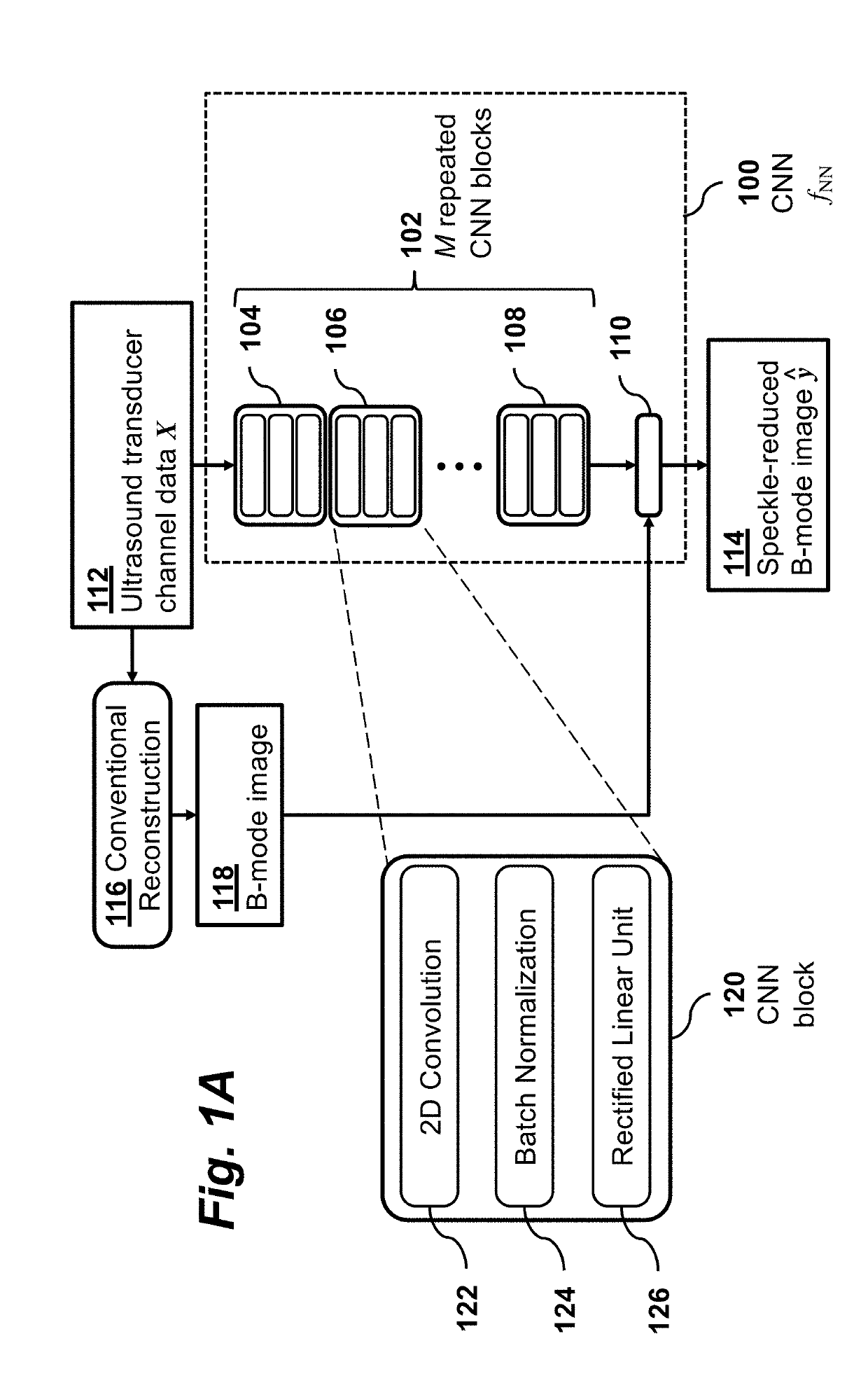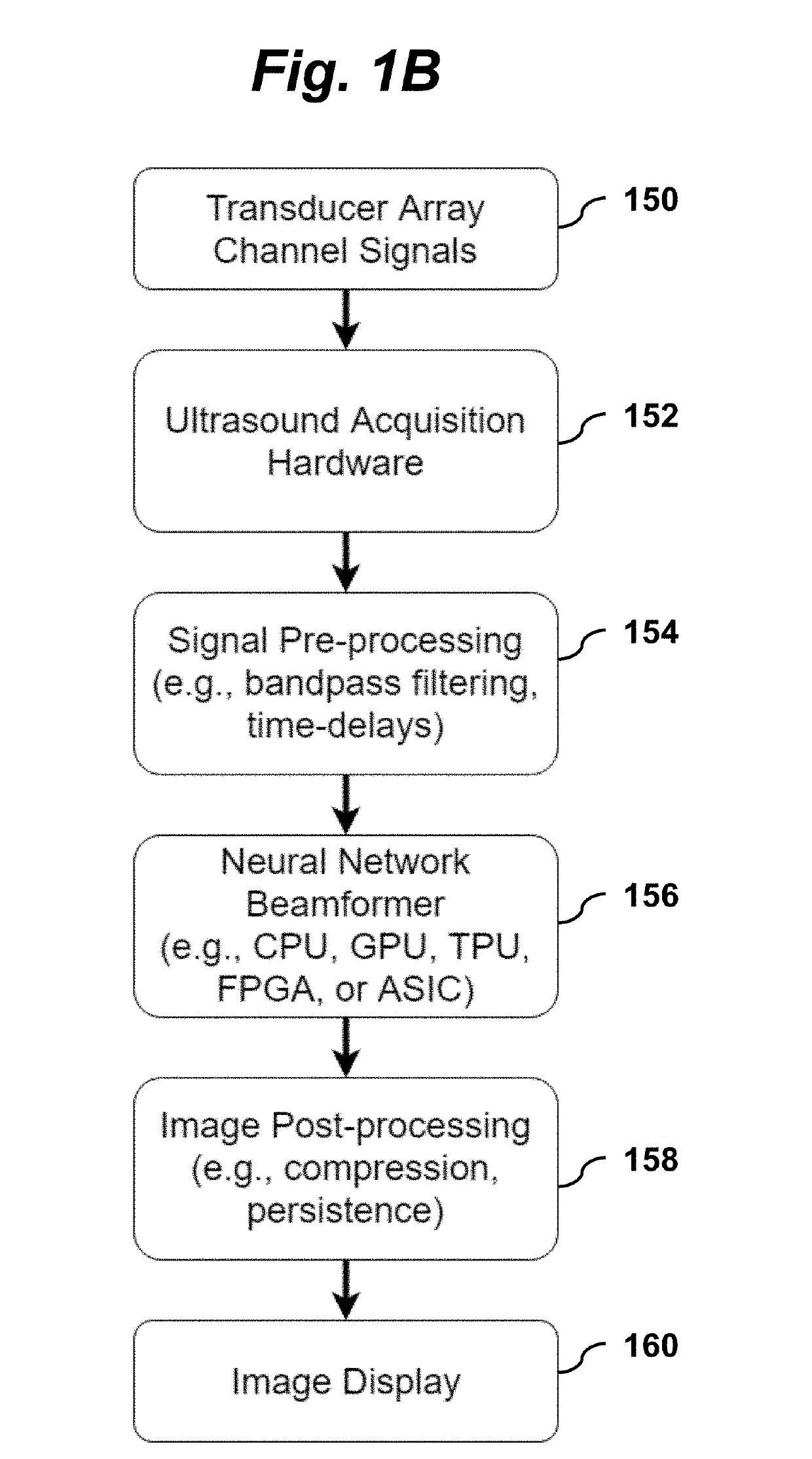Ultrasound speckle reduction and image reconstruction using deep learning techniques
- Summary
- Abstract
- Description
- Claims
- Application Information
AI Technical Summary
Benefits of technology
Problems solved by technology
Method used
Image
Examples
Embodiment Construction
Problem Formulation
[0030]Consider a vectorized grid of P×Q field points (also referred to as “pixels”) with true echogenicities yϵPQ. Let XϵPQ×N denote the demodulated analytic signals captured by the N elements of a transducer array after applying the appropriate time delays to focus the array at each of the field points. In B-mode image reconstruction, y is estimated from X using some function ƒ(X)=ŷ.
[0031]In the traditional delay-and-sum (DAS) technique, y is estimated as the absolute value of the channel sum:
ŷ=ƒDAS(X)=|X1|, (1)
where 1 is an N-vector of ones and |⋅| denotes an element-wise absolute value. According to the present invention, y is estimated by a convolutional neural network using a function ƒNN(X; θ), where θ are the parameters of the network. As illustrated in FIG. 1A, the estimate ŷ=ƒNN(X; θ) is computed by a convolutional neural network 100 that takes the ultrasound transducer data 112 as its input X and produces a speckle-reduced B-mode image 114 as its output...
PUM
 Login to View More
Login to View More Abstract
Description
Claims
Application Information
 Login to View More
Login to View More - R&D
- Intellectual Property
- Life Sciences
- Materials
- Tech Scout
- Unparalleled Data Quality
- Higher Quality Content
- 60% Fewer Hallucinations
Browse by: Latest US Patents, China's latest patents, Technical Efficacy Thesaurus, Application Domain, Technology Topic, Popular Technical Reports.
© 2025 PatSnap. All rights reserved.Legal|Privacy policy|Modern Slavery Act Transparency Statement|Sitemap|About US| Contact US: help@patsnap.com



